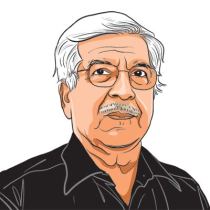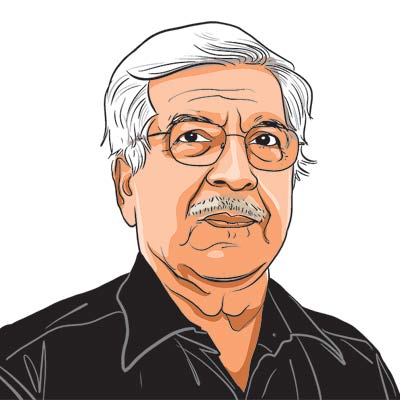The More Things Change
Economic priorities set in Planning Commission in 1970s-80s continue

We have abolished planning but these still dominate slogans of intentions. When the Niti Aayog brings out its Seven-Year Plan, they will all be there again.
Jairam Ramesh’s Intertwined Lives: P N Haksar and Indira Gandhi is an important book. It is a record of the events of the 1970s and 1980s, much like the books by Frank Moraes, Abdul Kalam Azad and Nehru’s letters were sources of the history of the decades before Independence.
Haksar’s stint in the Planning Commission, for instance, holds fascinating accounts of events in the Seventies. His letter to Moraji Desai when he insisted on resigning (even though Desai wanted him to stay on), “because that would amount to defection”, had an interesting section in it. Haksar, according to Ramesh, wrote that the problems for the next phase he was leaving included “more disaggregated agricultural planning, a sharper focus on 100 most backward districts of the country, emphasis on better utilisation of land and water resources and above all, overriding priority to employment planning particularly small towns and rural areas.”
On page 375, the author adds that “Many of these themes were to become essential features of development policy in years to come”. Everything changes, nothing does. These were the priorities in later decades. We have abolished planning but these still dominate slogans of intentions. When the Niti Aayog brings out its Seven-Year Plan, they will all be there again.
How did these priorities emerge? Ramesh gives credit to Haksar in bringing to the Planning Commission younger economists, “Yoginder Alagh, Vijay Kelkar and Nitin Desai”.
In fact, all three were brought in by D P Dhar, but he passed away soon after and it is true that Haksar would call them his Three Musketeers, both at home and with international guests and at events abroad. How did these priorities emerge? Vijay and Nitin were to join the government but I was always clear that I would, after some experience, go back to my teaching and research lair in Ahmedabad. When I joined the Planning Commission, heading its powerful Perspective Planning Division, I had to pay a courtesy call to the chairman, Indira Gandhi.
It was getting dark early in the evening on that cold December night in Delhi and she looked at me and remarked that I was young. I was then holding the job the iconic Pitamber Pant did and he was her friend. She was an epitome of quiet authority and I thought, time to go back. But she was very graceful and said: “Sit down, you have all the skills needed for your job. Your main job will be to plan for self-reliance in food. We are humiliated every time we have to ask for grain. You understand what I am saying?” I muttered, “yes, ma’am. I have not worked on Agriculture but I will do my best.”
That’s how it started. I found out that the Planning Commission was setting targets for food without any detailed data. So we wrote to every collector in India and set up an information base. We found out what the actual yield was with and without inputs from farm data and used that to plan for inputs. The country responded. We stopped concessional imports.
But we wanted more and that’s what Haksar was telling Morarji bhai. That’s what the better use of land and water was all about. Complete irrigation projects. Use your groundwater well. Not in terms of slogans but actual projects and funds for them. So also for seeds and inputs. The “hundred districts” came from that information base. Indira Gandhi was to announce from the Red Fort in August 1975 that the Planning Commission says that in a hundred districts, agriculture is going down. For some reason, the hundred districts remain in our historical consciousness. Later, a hundred districts were declared backward.
Once we did all this, the NSSO had started collecting person-day employment statistics and we built models around that and showed that small farms and small towns could be the turning point in generating jobs. We published all this. Jeffrey Sachs was to project the Indian strategy then as the one Sahelian Africa is to follow and the World Bank was to develop its one dollar a day poverty line from the Indian Nutrition Calorie Line and our Basic Needs plans. Rajiv Gandhi was meant to push the reforms but he carried the mantle and all this was woven into his panchayats and agro-climatic plans. After him, they denounce it in the press but repeat in their councils and policy Plans. Nudge nudge, wink wink.
The writer, a former Union minister, is an economist
For all the latest Opinion News, download Indian Express App
More From Yoginder K. Alagh
- Mending The FrameIt is time the pattern of training, system of evaluation, of civil servants is debated..
- Marx And UsHe taught us to look at not what the facts say, but what they do..
- When Civilisations DisagreeGovernment must be circumspect about Cauvery dispute resolution mechanism. ..








































No hay comentarios:
Publicar un comentario